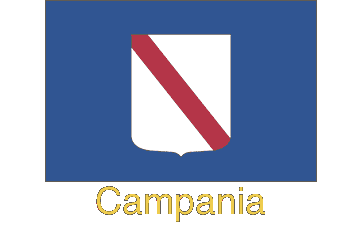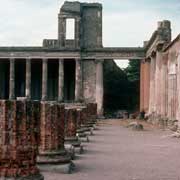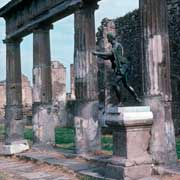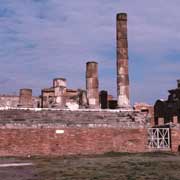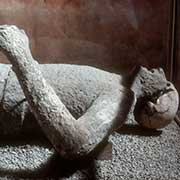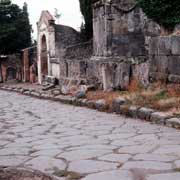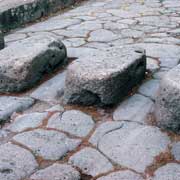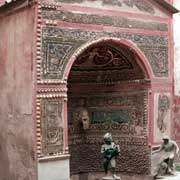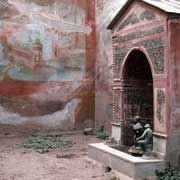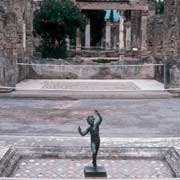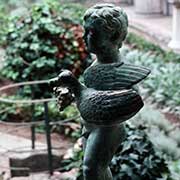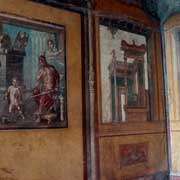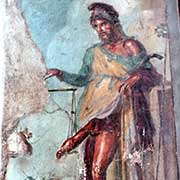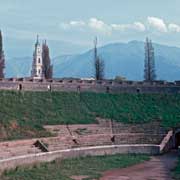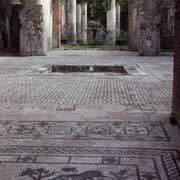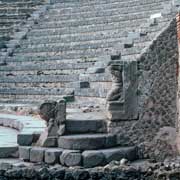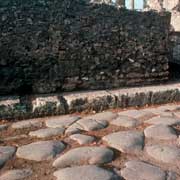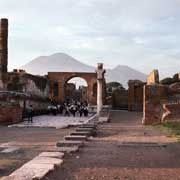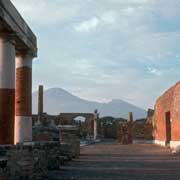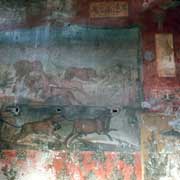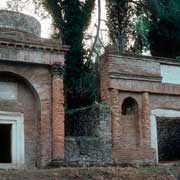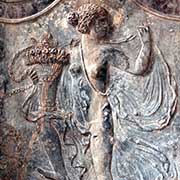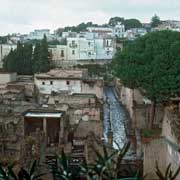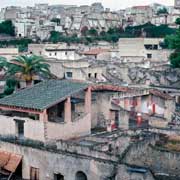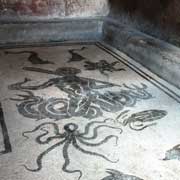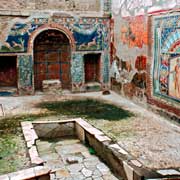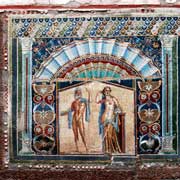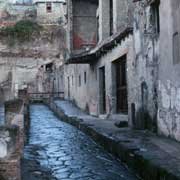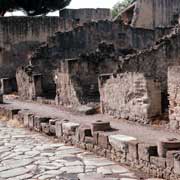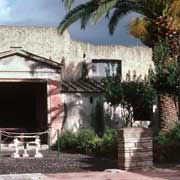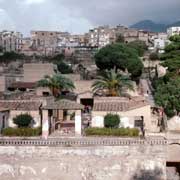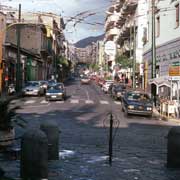Photos of Pompeii and Herculaneum, Italy
Pompeii and Herculaneum
Pompeii was a relatively prosperous Roman town on a plateau of ancient lava near the Bay of Naples, about 1.5 kilometres from the foot of Mount Vesuvius. Its villas and palaces were devastated by an earthquake in 63 CE. The town had been largely rebuilt when in the summer of 79 CE, Vesuvius erupted suddenly and with great violence, burying it under a layer of pumice stone called Lapilli. Streams of lava and mud also poured into nearby Herculaneum, filling the town and its harbour.
you may then send it as a postcard if you wish.
For hundreds of years, Pompeii lay buried under cinders, ashes and stone. In the 1700s, it was rediscovered. Since then, much has been learned about the ancient Romans’ history and everyday life and customs. Pompeii was built in an oval about 3 kilometres around and surrounded by a wall with seven gates. The streets were paved with blocks of lava, and ancient wheel ruts may still be seen in the pavements. In the centre of Pompeii was the forum, an open square surrounded by important buildings. The city had a theatre, an amphitheatre, a gladiators court, many temples, and three large public baths. The Pompeians built their villas as a typical Roman house, with rooms around an atrium (reception room). Townhouses often had shops bordering the street, and most buildings had more than one story. It was a market for farm produce of a fertile countryside, and it made such specialties as millstones, fish sauce, perfumes, and cloth.
About three-fourths of Pompeii has now been uncovered. Visitors may see buildings as they stood almost 2,000 years ago. They may walk in and out of houses and up and down narrow lanes, just as the Pompeians did. The remains of about 2,000 victims out of a population of some 20,000 have been found in excavations at Pompeii. Some were trapped in their homes and killed by hot ashes. Others breathed the poisonous fumes and died as they fled; the shells (moulds) of the bodies preserved in the hardened ash have been found. Pouring plaster into the shells produced exact copies of the individuals, even to the expressions of agony on their faces.
The eruption of Vesuvius also destroyed the nearby cities of Stabiae and Herculaneum. The mud and lava that buried Herculaneum also preserved it as a record of life in ancient times: priceless manuscripts, works of art, and tools of daily life have been found. It was a small, pleasant city with a good harbour at the foot of Mount Vesuvius. It was also damaged by an earthquake in 63 CE but had been rebuilt. Sixteen years later, a volcanic eruption buried Herculaneum under a flow of lava and mud 30 metres deep in some places. A village grew later near the site of Herculaneum, and in the early 1700s, a farmer found marble statues far below the surface while he was digging for a well. Only partial excavation has been done, and because the modern growing city of Ercolano sits on its site, it makes further excavation difficult.
